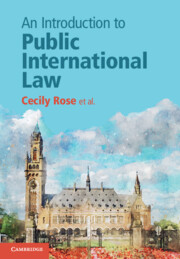Refine search
Actions for selected content:
36846 results in Cambridge Textbooks
7 - Children’s literature as the heart of literacy teaching
-
-
- Book:
- English and Literacies
- Published online:
- 02 March 2022
- Print publication:
- 18 February 2022, pp 154-178
-
- Chapter
- Export citation
Introduction
-
- Book:
- English and Literacies
- Published online:
- 02 March 2022
- Print publication:
- 18 February 2022, pp 1-5
-
- Chapter
- Export citation
2 - English and literacies education in the Australian context
-
-
- Book:
- English and Literacies
- Published online:
- 02 March 2022
- Print publication:
- 18 February 2022, pp 29-47
-
- Chapter
- Export citation
14 - Publishing texts: developing handwriting and keyboarding skills
-
-
- Book:
- English and Literacies
- Published online:
- 02 March 2022
- Print publication:
- 18 February 2022, pp 322-348
-
- Chapter
- Export citation
16 - Partnerships for literacy
-
-
- Book:
- English and Literacies
- Published online:
- 02 March 2022
- Print publication:
- 18 February 2022, pp 375-399
-
- Chapter
- Export citation
Frontmatter
-
- Book:
- English and Literacies
- Published online:
- 02 March 2022
- Print publication:
- 18 February 2022, pp i-iv
-
- Chapter
- Export citation
12 - Creating positive, inclusive learning environments: working with learners with additional and diverse needs
-
-
- Book:
- English and Literacies
- Published online:
- 02 March 2022
- Print publication:
- 18 February 2022, pp 273-296
-
- Chapter
- Export citation
3 - Assessment and reporting
-
-
- Book:
- English and Literacies
- Published online:
- 02 March 2022
- Print publication:
- 18 February 2022, pp 48-69
-
- Chapter
- Export citation
4 - Developing oracy: speaking and listening
-
-
- Book:
- English and Literacies
- Published online:
- 02 March 2022
- Print publication:
- 18 February 2022, pp 70-99
-
- Chapter
- Export citation
Contents
-
- Book:
- English and Literacies
- Published online:
- 02 March 2022
- Print publication:
- 18 February 2022, pp v-x
-
- Chapter
- Export citation
11 - Working with EAL/D learners: creating positive, inclusive environments, especially for First Nations learners
-
-
- Book:
- English and Literacies
- Published online:
- 02 March 2022
- Print publication:
- 18 February 2022, pp 249-272
-
- Chapter
- Export citation
Authors
-
- Book:
- English and Literacies
- Published online:
- 02 March 2022
- Print publication:
- 18 February 2022, pp xi-xii
-
- Chapter
- Export citation
Online resources
-
- Book:
- English and Literacies
- Published online:
- 02 March 2022
- Print publication:
- 18 February 2022, pp xv-xvi
-
- Chapter
- Export citation
8 - Understanding and responding to texts
-
-
- Book:
- English and Literacies
- Published online:
- 02 March 2022
- Print publication:
- 18 February 2022, pp 179-204
-
- Chapter
- Export citation
9 - Creating texts
-
-
- Book:
- English and Literacies
- Published online:
- 02 March 2022
- Print publication:
- 18 February 2022, pp 205-226
-
- Chapter
- Export citation

An Introduction to Public International Law
-
- Published online:
- 17 February 2022
- Print publication:
- 03 March 2022
-
- Textbook
- Export citation
Preface
-
- Book:
- Ecohydrology
- Published online:
- 03 February 2022
- Print publication:
- 17 February 2022, pp xi-xiv
-
- Chapter
- Export citation
5 - The Atmosphere
-
- Book:
- Ecohydrology
- Published online:
- 03 February 2022
- Print publication:
- 17 February 2022, pp 115-150
-
- Chapter
- Export citation
10 - Ecohydrology of Agroecosystems
-
- Book:
- Ecohydrology
- Published online:
- 03 February 2022
- Print publication:
- 17 February 2022, pp 307-355
-
- Chapter
- Export citation
6 - Stochastic Tools for Ecohydrology
-
- Book:
- Ecohydrology
- Published online:
- 03 February 2022
- Print publication:
- 17 February 2022, pp 151-186
-
- Chapter
- Export citation
